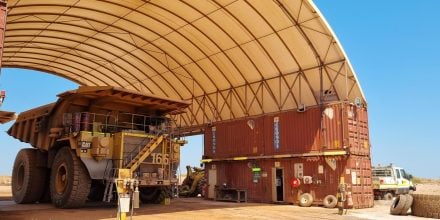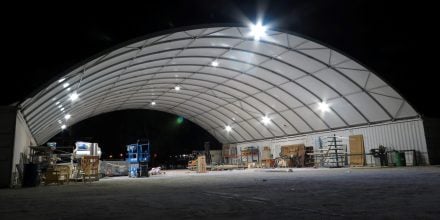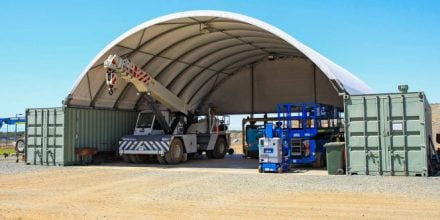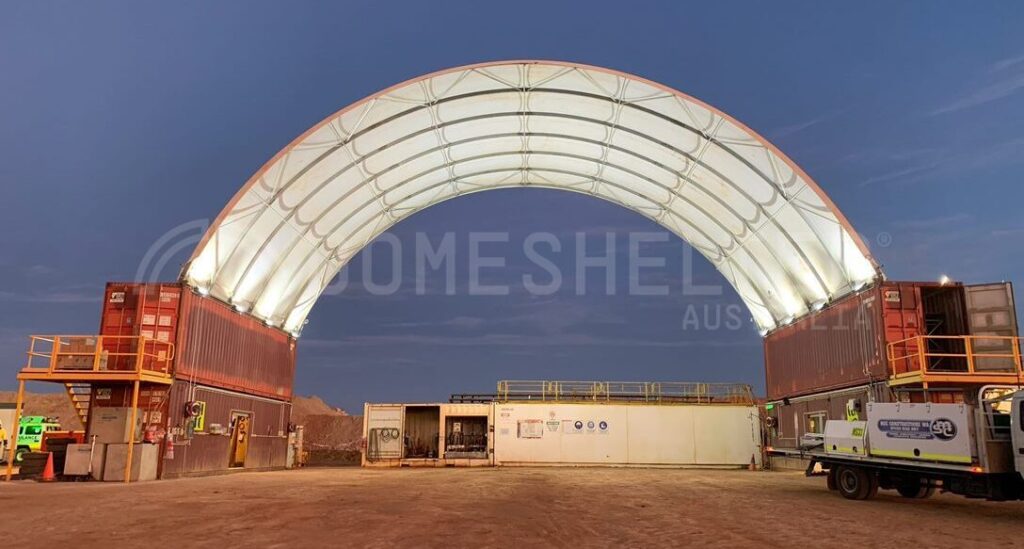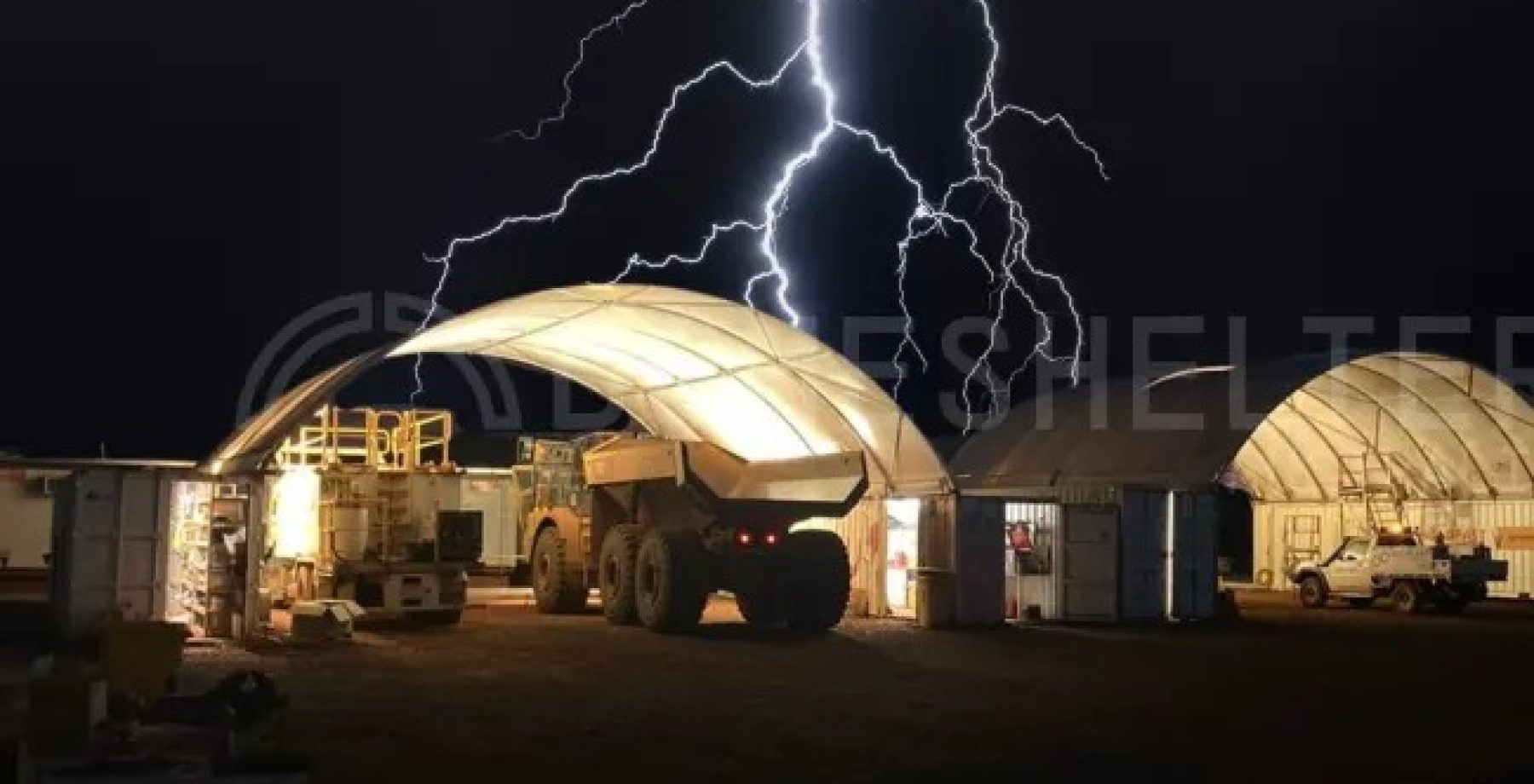
Lightning is an often overlooked workplace hazard that can lead to serious harm if not properly addressed. Lightning is of particular concern in the mining industry, with the ‘top end’ of Australia being one of the most lightning prone areas on Earth, according to the ABC.
Lightning is not only a considerable safety concern, but also poses a significant financial risk in downtime hours. DomeShelter Australia often supplies Shelters to these regions, and receive frequent enquiries from customers who are concerned about how our products function in lightning events. This article explains what we can do to make Fabric Shelters safe in lightning-related events.
How Does Lightning Work?
Lightning is generated when positively and negatively charged particles located inside clouds interact and create a surge of energy. The surge can either remain inside the cloud, or a bolt of energy can go from the cloud to the ground.
The typical current associated with a lightning strike is in the range of 25,000 volts. A 0.05 volt current through the body is sufficient to cause cardiac arrest; therefore the damage that could be caused by a lightning current running through the body is usually unrecoverable. Even a lightning current that travels 10s of kilometres through the ground can cause injuries and death.
Electrical energy follows the path of least resistance, and can travel through objects for some time after the initial strike occurs. As such, there are a number of ways lightning can cause potential harm:
- Direct Strike: A person struck directly by lightning becomes a part of the main lightning discharge channel. This most often occurs when victims are in open areas during storms, and is the least common but most deadly form of strike.
- Side Flash: This occurs when lightning strikes an object near a victim and a portion of the charge jumps from the object to the victim, who functions as a kind of ‘circuit breaker’.
- Ground Current or Step Potential: When lightning strikes an object on the ground which is not specifically designed for absorbing a lightning current, much of the energy travels outward from the strike into the ground and along the ground surface. If an individual stands on ground that is close to a strike, an electrical potential can develop between their feet – this is called step potential.
- Conduction or Touch Voltage: Wires and metal objects provide low resistive paths for lightning currents to travel through. When a lightning current is passing through conductive objects, their current potential increases substantially.
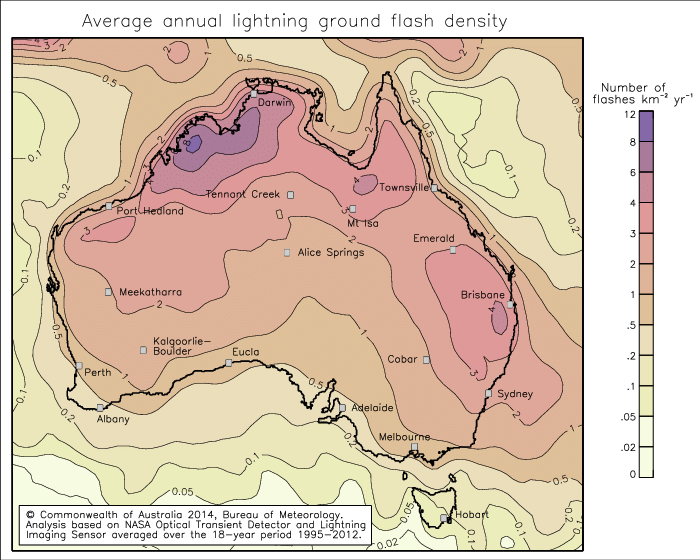
Map courtesy of the Bureau of Meteorology, showing the frequency of lightning strikes across Australia
Lightning and the Mining Industry
A number of significant lightning incidents have affected the mining sector in recent years, causing severe injuries and sometimes death. The lightning risk associated with the mining industry is significant enough to warrant a mining-specific subsection in the Australian Standards AS1768:2021 – Lightning Protection. Appendix M – Lightning Risk in Mines deals with the hazards and recommendations relating to the mining sector.
Lightning strikes are more common in the mining industry, particularly on sites that deal with metals – both metals that are used and the metals mined – that involve sluicing and where the ground is damp. These conditions increase conductivity, compounded further by the presence of large mining vehicles.
The mining industry involves a large workforce where a significant percentage primarily work outdoors. These employees may regularly be exposed to periods of higher risk thunderstorm conditions, especially in the summer months. This is due to lightning being more common in the Northern regions of Australia, where most of the country’s mining operations are located.
Many mines will cease work in the event of a lightning storm and order employees to seek immediate refuge indoors or within a designated safe shelter.
Several hazards have an increased risk when mining vehicles are operating in a lightning storm, including:
- Tyre rupture or explosion via pyrolysis
- Exposure to high voltage via UHF-radio wiring and other conductive surfaces (touch voltage)
- Initiation of fires through combustion of electronics, batteries, fuel etc
- Exposure to high voltage while outside and in close quarters to vehicles (i.e., side flash injury, touch potential, and/or step potential)
Fabric Shelter Lightning Protection
The most dangerous position to be in during a storm is outside, exposed.
With a lightning protection system installed, Fabric Shelters can be utilised as ‘Safe Shelters’ during lightning storms.
Experts have established that there is nothing which offers 100% protection against lightning. There are, however, things that can be done to reduce the level of risk, based on information compiled by leading researchers in lightning safety and protection.
Ground currents are the most common issue related to lightning. Step potential and touch potential injuries often result from ground currents, in total accounting for 55 to 75% of total lightning injury statistics.
This risk can be mitigated during the construction phase of the Shelter, with the installation of lightning protection equipment, such as:
- A copper tape earth ring around the Shelter site
- Steel reinforcement within concrete slabs beneath the Shelter, if applicable, which can be incorporated into a lightning protection earthing system
- Lightning rods placed along mounting rails and the hoop structure
- Freestanding lightning columns located around Fabric Shelters to provide what is known as lightning protection by isolation – freestanding poles create a protected area that intercepts lightning currents
- Installing surge protection devices on incoming conductive services such as power, telecoms, radios etc.
How Can DomeShelter Australia Help?
Lightning protection kits can be added to Fabric Shelters for clients who would like the extra protection.
We source these kits from reputable companies in the lightning safety field. DomeShelter Australia’s pre-existing relationship with these companies means they are experienced in working with Fabric Shelters and can offer a trusted solution.
It’s best to get in touch with a lightning expert if you have any further or more specific questions regarding lightning protection. We may be able connect customers to these experts directly if they are unsure or would like more information on the subject.




